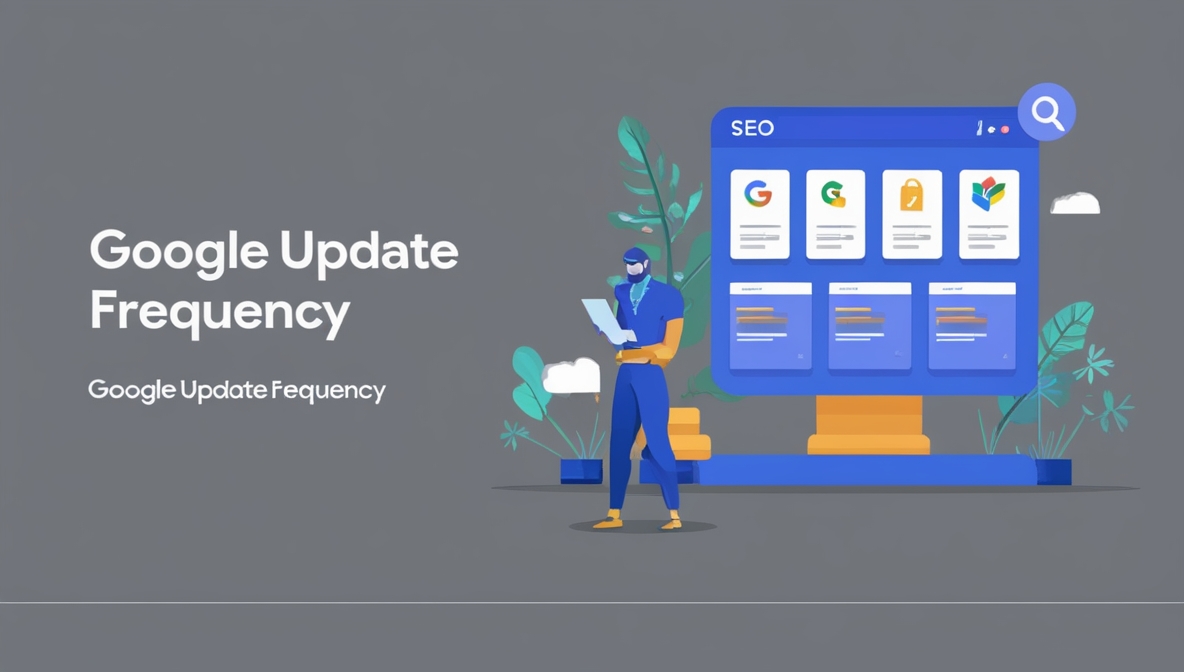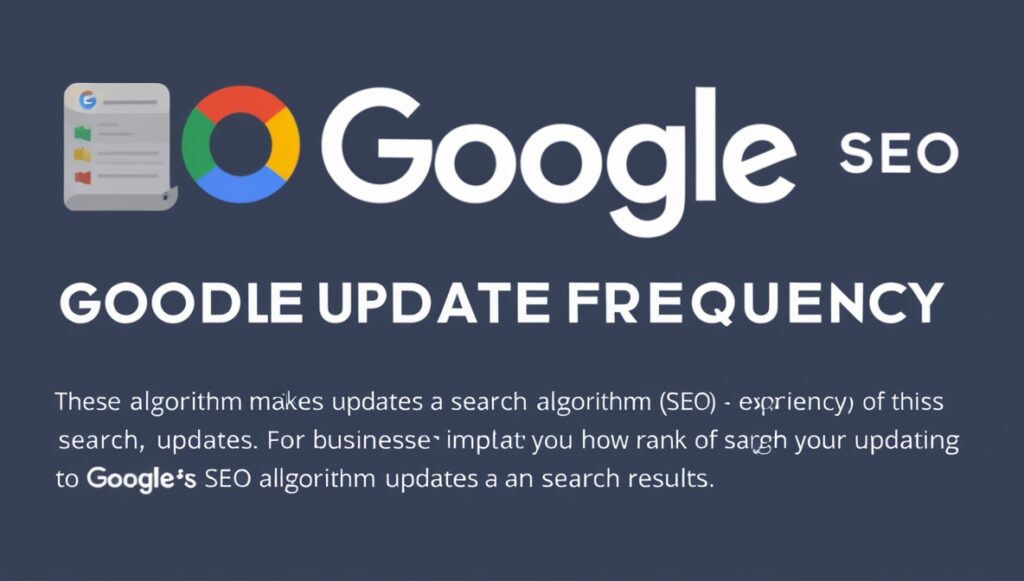
Search engine optimization (SEO) is a constantly evolving field, largely due to the frequent updates that Google makes to its algorithm. These changes, which can occur hundreds of times per year, significantly influence how websites rank in search results. For businesses aiming to maintain or improve their search visibility, understanding Google update frequency SEO is crucial. In this article, we’ll dive deep into the frequency of Google’s algorithm updates, what these updates entail, and how you can adjust your SEO strategies to stay ahead.
What Is Google Update Frequency SEO?
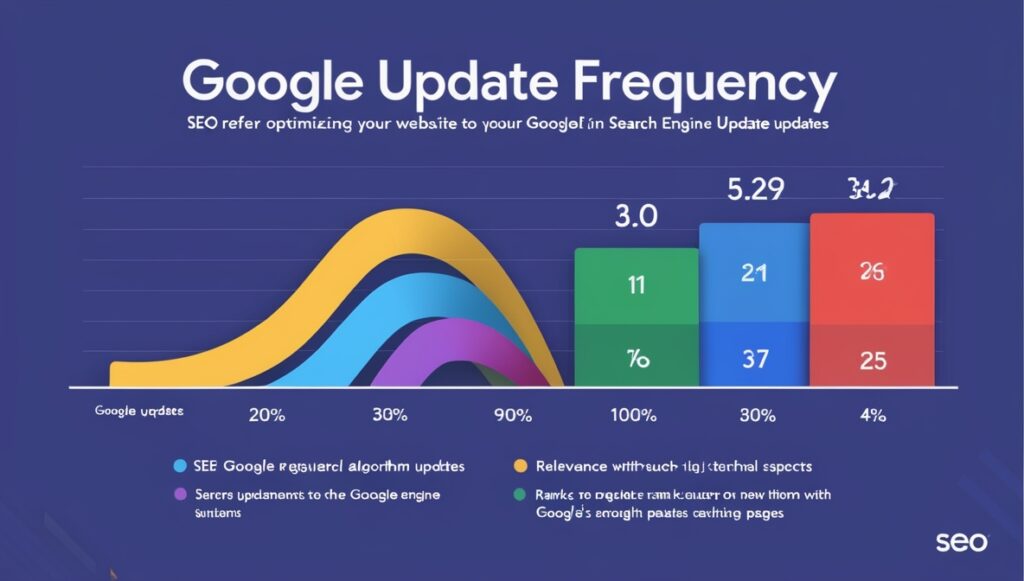
Google update frequency SEO refers to optimizing your website to account for Google’s regular algorithm updates. These updates dictate how Google ranks web pages in search engine results pages (SERPs), based on a range of factors such as relevance, quality, user intent, and technical aspects. SEO strategies must continuously adapt to the evolving landscape, as Google’s algorithm is refined to provide users with the most relevant and high-quality results.
How Often Does Google Update Its Algorithm?
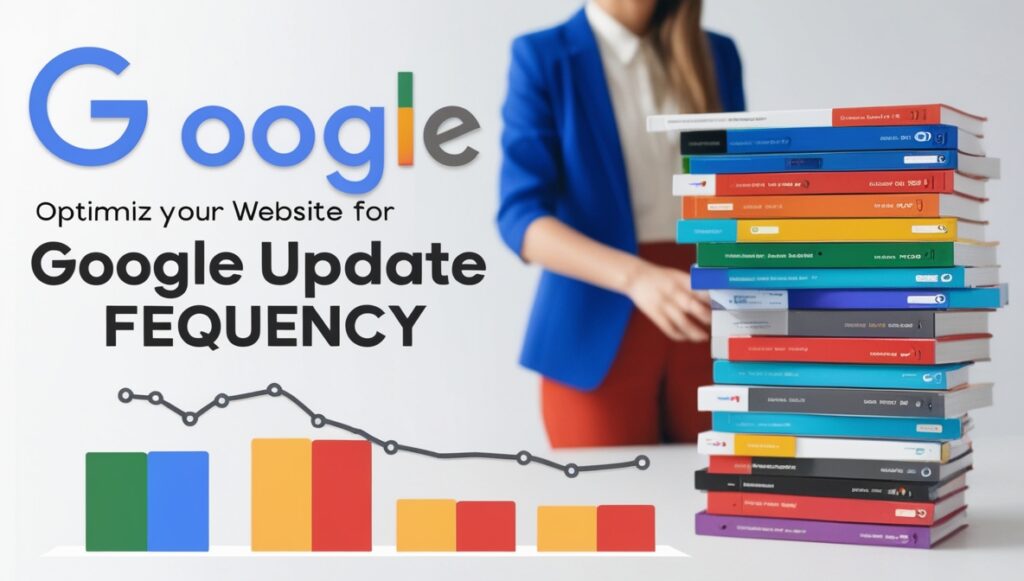
How often does Google update its algorithm? Experts estimate that Google updates its algorithm somewhere between 500-600 times per year. Most of those changes are small and do not drastically impact rankings, while major updates, like BERT or Passage Ranking, can impact a significant percentage of all keyword searches. Understanding the distinction between these smaller tweaks and larger, more comprehensive updates can help businesses navigate the shifts in the digital marketing landscape.
Types of Google Algorithm Updates
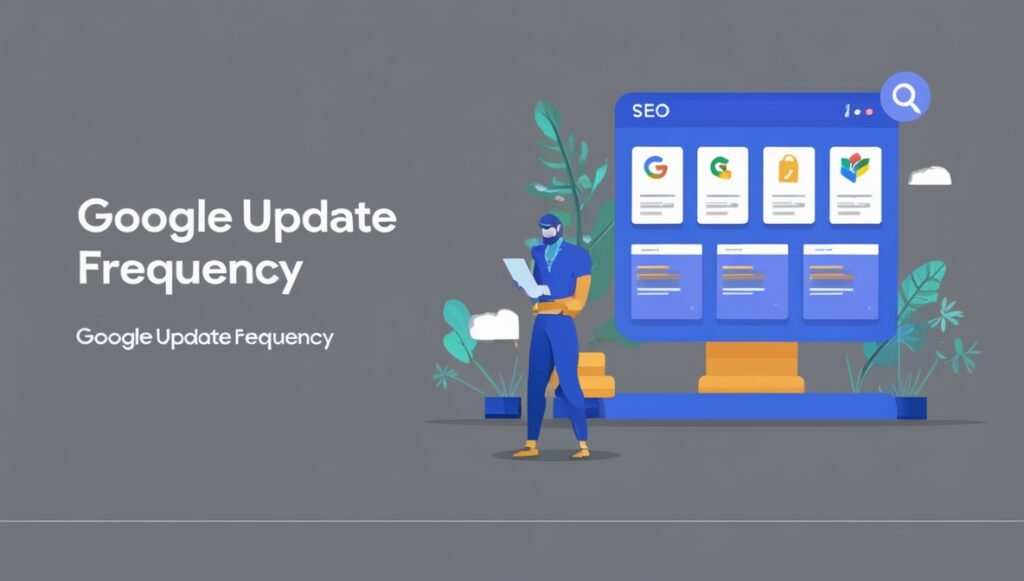
Google’s algorithm updates can be categorized into three main types:
- Core Algorithm Updates
Core updates are major changes that affect Google’s search engine algorithm as a whole. These updates typically happen several times a year and can significantly impact search rankings. Core updates are aimed at improving Google’s ability to understand and process user intent, ensuring the most relevant results are delivered. - Broad Core Updates
These are larger updates that may affect how content is ranked and can lead to fluctuations in search engine rankings. Broad core updates focus on improving the quality and relevance of search results, and they may target specific issues, such as content quality or spam. - Smaller Algorithm Adjustments
Aside from the major core updates, Google makes hundreds of smaller adjustments throughout the year. While each individual update may only have a minor impact on rankings, the cumulative effect of these changes can be significant. It’s important to keep track of these smaller updates as well, as they can still affect your SEO strategy.
Notable Google Algorithm Updates and Their Impact
Over the years, Google has rolled out several major algorithm updates that have drastically changed the SEO landscape. Some of the most significant updates include:
- Panda Update (2011)
The Panda update was introduced to target websites with low-quality content. It aimed to penalize sites that used content farms, duplicate content, or keyword stuffing. This update made it necessary for businesses to prioritize high-quality, original content. - Penguin Update (2012)
The Penguin update targeted websites with spammy link-building practices and over-optimized anchor text. It emphasized the importance of obtaining natural, high-quality backlinks and diversifying anchor text to avoid penalties. - Hummingbird Update (2013)
Hummingbird focused on understanding user intent rather than individual keywords. It allowed Google to interpret conversational search queries better, leading to the rise of semantic search and the need for content that answers users’ specific questions. - Mobile-Friendly Update (2015)
Also known as “Mobilegeddon,” this update prioritized mobile-friendly websites in search results, reflecting the growing importance of mobile search. - BERT Update (2019)
The BERT update helped Google understand the context of words in search queries. It allowed the algorithm to process complex or conversational search queries more accurately. BERT’s impact on SEO made it necessary for content to be more contextually relevant and user-focused. - Passage Ranking Update (2020)
This update allowed Google to rank individual passages from a web page independently. It means that even if a specific passage of content is buried deep within a page, it can still be surfaced if it answers the user’s query better than other content.
How Google Update Frequency SEO Affects Rankings

The impact of Google’s frequent updates on search rankings varies, depending on the nature of the update. While some changes may lead to drastic shifts in rankings, others may be more subtle. Here are some key ways these updates can affect SEO:
- Fluctuations in Search Rankings
Whenever Google rolls out an algorithm update, some websites may experience significant fluctuations in search rankings. Major updates like broad core updates can cause noticeable changes across industries, affecting traffic and conversions. It’s important to monitor your rankings closely during and after an update to assess any impact. - Shifts in SEO Best Practices
As Google’s algorithm evolves, so do SEO best practices. For instance, updates such as BERT and Hummingbird have led to a greater focus on user intent and context rather than just keyword density. Content creators and digital marketers must adapt their strategies to keep up with these changing standards. - Increased Importance of High-Quality Content
Over the years, Google has made it clear that content quality is one of the most critical ranking factors. Updates like Panda and BERT emphasize the need for content that is relevant, well-written, and user-focused. Thin content or content created solely for SEO purposes is less likely to perform well in search results. - Need for Technical Optimization
With updates like the Mobile-Friendly Update and Page Experience Update (which includes Core Web Vitals), technical aspects of a website have become increasingly important. Factors like page load speed, mobile usability, and overall user experience are now integral to SEO success.
Best Practices for Adapting to Google Update Frequency SEO

To thrive in an environment where Google’s algorithm is frequently changing, businesses need to adopt flexible and proactive SEO strategies. Here are some best practices to keep in mind:
1. Focus on Quality Content
Quality content remains the cornerstone of effective SEO. Content should be informative, engaging, and tailored to meet user intent. Regularly updating your content to keep it relevant can help you stay aligned with Google’s latest algorithm changes.
2. Monitor Algorithm Updates Regularly
Stay informed about major algorithm updates by following reputable SEO blogs and using tools like MozCast or SEMrush Sensor to monitor ranking volatility. Being aware of upcoming updates can help you adjust your strategy accordingly.
3. Optimize for User Experience
User experience is becoming increasingly important in SEO. Make sure your website is mobile-friendly, has fast loading times, and provides a seamless user journey. The introduction of Core Web Vitals as a ranking factor underlines the importance of technical optimization.
4. Diversify Your Backlink Profile
Since backlink quality is a significant ranking factor, focus on building a diverse and natural backlink profile. Avoid spammy link-building practices that could lead to penalties. Aim for links from authoritative and relevant websites in your industry.
5. Leverage Semantic Search
With updates like BERT, Google’s algorithm is better at understanding the meaning behind search queries. Use semantic SEO techniques to create content that answers users’ specific questions and includes variations of targeted keywords.
6. Track Performance with Analytics Tools
Using tools like Google Analytics and Search Console can help you track changes in your website’s traffic and rankings. Regular monitoring allows you to quickly identify any issues and take corrective action following an algorithm update.
How to Recover from a Drop in Rankings After an Algorithm Update
If your website experiences a drop in rankings after a Google update, here are steps you can take to recover:
- Analyze the Update
Identify the type of algorithm update that caused the drop. Understanding what the update targeted (e.g., content quality, backlinks, mobile usability) will help you determine the necessary adjustments. - Audit Your Content
Conduct a content audit to identify any low-quality, outdated, or irrelevant content. Updating or removing such content can improve your website’s quality signals. - Improve User Experience
Evaluate your website’s user experience, including page load speed, mobile responsiveness, and navigation. Implement changes to enhance the overall user experience, which can positively influence your rankings. - Strengthen Your Backlink Profile
If your site was affected by a backlink-related update, review your backlink profile to ensure it meets quality standards. Disavow any spammy or low-quality links and work on acquiring high-quality, relevant backlinks.
Conclusion

Google update frequency SEO is an essential consideration for businesses aiming to stay ahead in the ever-changing world of search engine optimization. With hundreds of algorithm changes each year, staying up-to-date with the latest best practices and being prepared to adapt your strategy is key to maintaining search visibility.
By understanding how Google’s updates work and following best practices for SEO, you can protect your website from ranking drops and take advantage of new opportunities to improve your search engine presence. For businesses that need expert guidance in navigating the complexities of SEO, Dust Digital Marketing Ltd. offers specialized SEO services designed to help you stay ahead of the curve. Visit https://dusthk.com to learn more about how we can enhance your digital marketing strategy.
Stay informed, be adaptable, and focus on providing high-quality content and user experiences—these are the pillars of a successful SEO strategy in the era of frequent Google updates.

